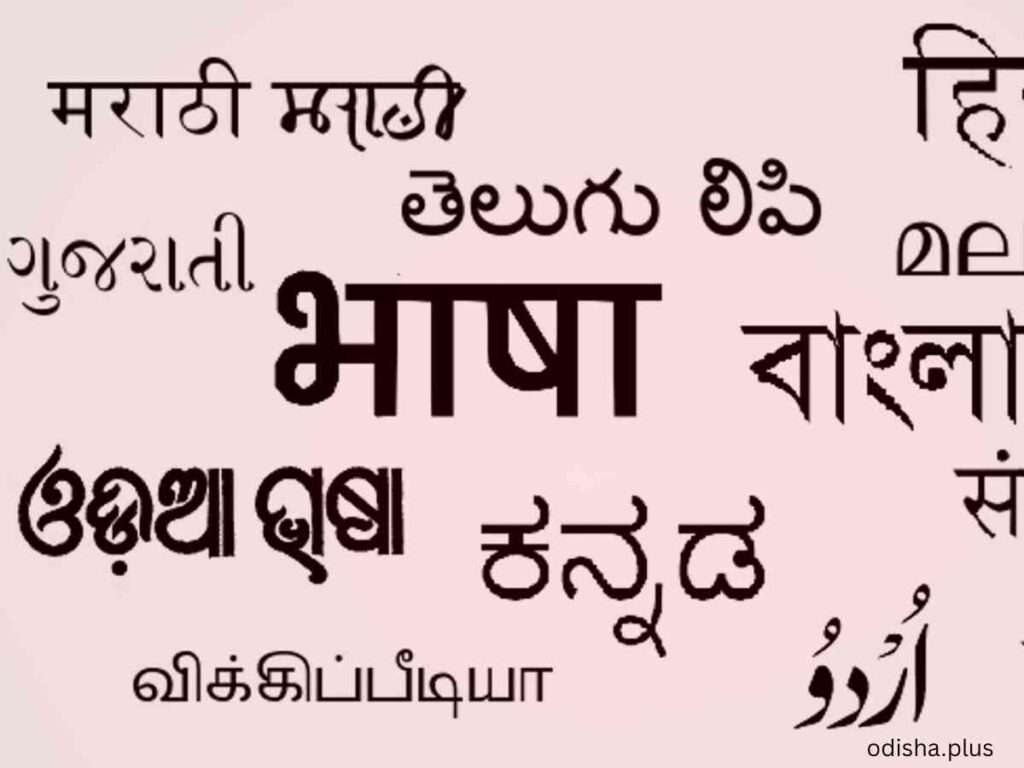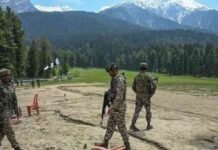India Human Development Survey (2011-12) indicates that approximately 10-15% of Odisha’s population can engage in basic conversations in English, with even higher percentages in urban areas, reaching around 30-40% among educated individuals
Bhaskar Parichha

Recently, a controversy arose at the Surya Nagar branch of the State Bank of India located in Chandapura, Bengaluru, when a branch manager declined to communicate in Kannada with a customer, insisting instead on using Hindi. A viral video recorded the manager stating, “I will not speak Kannada for sure… but Hindi,” and when the customer reminded him that “this is Karnataka,” the manager replied, “This is India.”
The customer referenced guidelines from the Reserve Bank of India (RBI) that require the use of regional languages during customer interactions, but the manager dismissed this request, questioning its necessity and walking away after declaring, “I will never speak Kannada.”
Kannada Gothilla?
The incident ignited significant outrage, with pro-Kannada organizations such as Karnataka Rakshana Vedike (KRV) accusing the manager of showing disrespect towards Kannada-speaking customers and breaching customer service standards. KRV organized protests demanding the manager’s termination and planning a march to the SBI head office.
In response to the backlash, the manager issued an apology in Kannada, with guidance from colleagues, stating, “I apologize to anyone who was hurt by my actions. I will make an effort to communicate in Kannada.” SBI expressed its regret, confirmed that the incident is currently under review, and has transferred the manager.
The issue reflects broader linguistic sensitivities in Karnataka.
Ae Mere Watan!
But, when it comes to the people of Odisha, they typically adopt a practical attitude towards learning other languages, influenced by cultural, historical, and practical considerations.For them, any Indian language is acceptable, provided it can be learned.A unique affection for the languages of the nation!
True, Odia serves as the main language of Odisha, boasting a rich literary and cultural legacy, and many individuals take pride in its preservation. Nevertheless, the population is often multilingual out of necessity and exposure. Hindi, being a widely spoken language across India, is frequently learned, particularly in urban settings, through education, media, and interactions with those who do not speak Odia.
English is also widely accepted, especially among the educated and younger demographics, as it plays a crucial role in professional and academic prospects. In border areas, languages such as Bengali, Telugu, or Chhattisgarhi may be acquired due to their geographical closeness and trade.
Historically, the coastal position of Odisha and its trade connections have promoted a welcoming attitude towards linguistic diversity, incorporating influences from Sanskrit, Persian, and later English during the colonial era.
In the present day, migration to different states or countries encourages the Odia community to learn languages such as Tamil, Kannada, or even global languages like Arabic or Spanish, based on their work or living situation.
Phir Bhi Odia
However, the extent of language adoption differs. In rural regions, where Odia is the primary language of daily interactions, other languages might not be as readily accepted unless necessary for practical purposes, such as employment or education. Conversely, urban Odias, particularly in cities like Bhubaneswar or Cuttack, frequently switch fluently between Odia, Hindi, and English.
In Odisha, Hindi is predominantly spoken in urban centers and along the western border regions, more so than in other areas of the state. Cities such as Bhubaneswar, Cuttack, and Rourkela boast a considerable number of Hindi speakers, influenced by cosmopolitan factors, migration, and access to national media and educational systems where Hindi is either taught or serves as a link language.
In western Odisha, especially in districts like Sundargarh, Sambalpur, and Jharsuguda, Hindi is commonly spoken due to the closeness to Hindi-speaking states like Chhattisgarh and Jharkhand, along with industrial and trade activities that draw in non-Odia workers.
Conversely, in rural regions, particularly in coastal and eastern Odisha (like Puri, Cuttack, or Kendrapara), Odia is the primary language, with Hindi being used infrequently, typically confined to formal situations or interactions with outsiders.
Linked In
According to the 2011 Census of India, approximately 2.8% of the population in Odisha identifies Hindi as their mother tongue. However, its role as a second or linking language is considerably more prevalent in urban and border areas.
The degree to which English is spoken among the Odia population varies greatly depending on factors such as region, education, age, and socio-economic status within Odisha.
In urban centers like Bhubaneswar, Cuttack, Rourkela, and Berhampur, English is commonly used, particularly among the educated middle and upper classes. These cities are home to universities, IT sectors, and industries where English serves as a vital means of professional communication.
For instance, Bhubaneswar, which is the capital of Odisha and a growing hub for IT and education, experiences a notable use of English in workplaces, educational institutions, and social environments. Many urban Odias, especially the younger population, are either fluent or have conversational skills in English, thanks to their exposure through private schools, colleges, and various media outlets.
English Vinglish
In contrast, rural areas of Odisha, including villages in districts such as Puri, Ganjam, or Mayurbhanj, generally exhibit low levels of English proficiency. The Odia language is predominant in everyday life, with Hindi occasionally serving as a secondary language for communication with outsiders. English is usually restricted to basic phrases that are taught in schools if it is taught at all, since rural education often emphasizes Odia and sometimes Hindi.
English is a mandatory subject in schools across Odisha, adhering to both state and national educational frameworks (like CBSE and ICSE). Nevertheless, the standard of English instruction can differ significantly.
Prestigious private schools and urban educational institutions tend to produce fluent English speakers, while government schools in rural regions frequently face challenges related to teacher training and resources, resulting in limited proficiency. Furthermore, higher education, particularly in technical disciplines such as engineering or medicine, significantly enhances English skills.
Must Speak!
Younger Odias (those under 35) are more inclined to speak English, thanks to better access to education, digital media, and the effects of globalization.
Older generations, particularly in rural regions, often have limited or no proficiency in English, relying instead on Odia or Hindi. English is predominantly spoken among professionals, students, and individuals working in urban service sectors such as IT, hospitality, or corporate roles. For example, the expanding IT sector in Bhubaneswar, Odisha, employs thousands who use English daily.
In contrast, farmers, laborers, and small-scale traders in rural areas typically have little need or opportunity to communicate in English. According to the 2011 Census of India, only about 0.3% of Odisha’s population identified English as their mother tongue, which underrepresents its role as a second or third language.
Surveys like the India Human Development Survey (2011-12) indicate that approximately 10-15% of Odisha’s population can engage in basic conversations in English, with even higher percentages in urban areas, reaching around 30-40% among educated individuals.
Bihar ke Aaage
A study conducted in 2016 by the English and Foreign Languages University found that Odisha has a moderate ranking among Indian states regarding English proficiency. It falls behind states such as Delhi and Karnataka but is ahead of more Hindi-focused states like Bihar.
English is often regarded as a gateway to opportunities, associated with employment, advanced education, and social mobility. Urban residents of Odisha tend to embrace it for career growth, while those in rural areas may see it as less significant unless it is connected to specific objectives, such as moving to cities or overseas.
The rise in media consumption, including English films, web series, and social media, along with Odisha’s integration into the larger Indian economy, has led to an increase in English usage, particularly among the tech-savvy youth.
Nevertheless, a strong pride in Odia culture can cause some individuals to favor their native language, although this seldom results in a complete rejection of English. In Coastal Odisha, such as Puri and Cuttack, English is less prevalent compared to urban centers, yet it can be found among educated individuals and in sectors related to tourism due to interactions with non-Odia visitors.
In Western Odisha, including Sambalpur and Rourkela, English is spoken to a moderate extent, particularly in industrial and mining regions with diverse workforces, although Hindi often serves as a competing lingua franca.In tribal regions like Koraput and Kandhamal, the use of English is quite limited, with tribal languages and Odia being the primary languages, and Hindi being used occasionally.
On the whole, Odias adopt other languages when motivated by necessity, opportunity, or exposure to cosmopolitan influences, while still holding a strong attachment to their native language. Some individuals may resist the use of non-Odia languages if they feel it threatens their linguistic identity, especially in cultural or political situations, but this sentiment is not widespread.
(The author is a senior journalist and columnist. Views expressed are personal.)

























